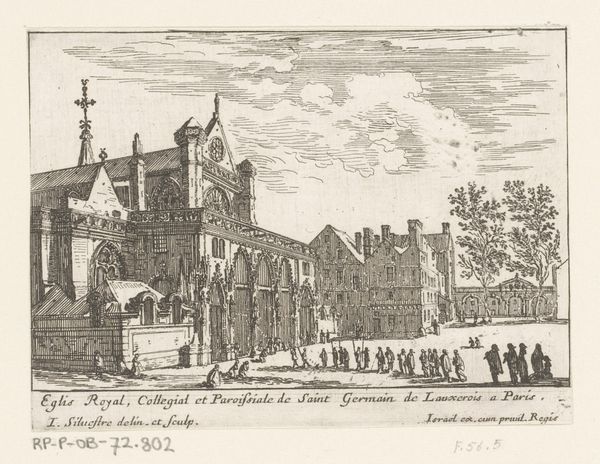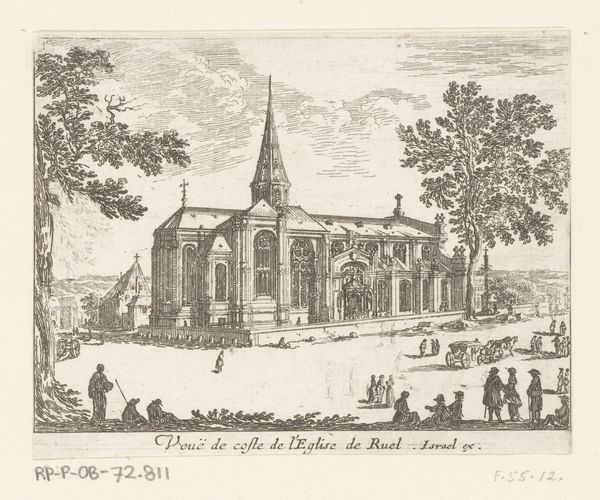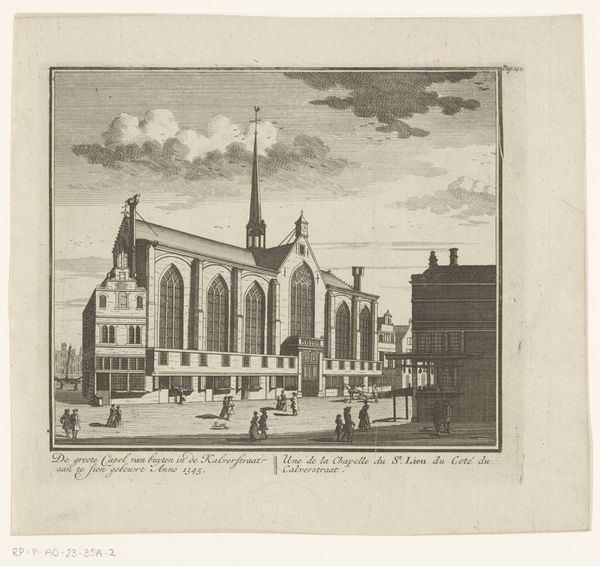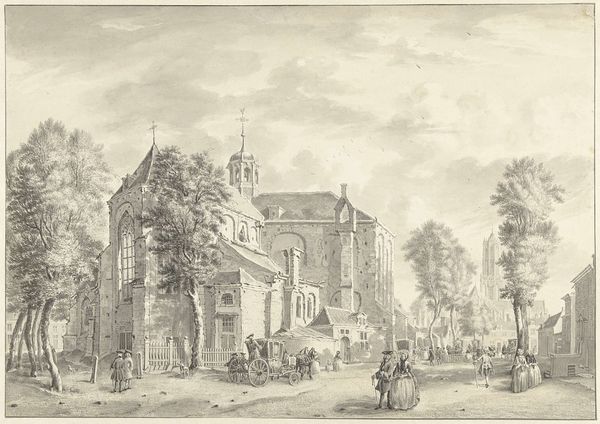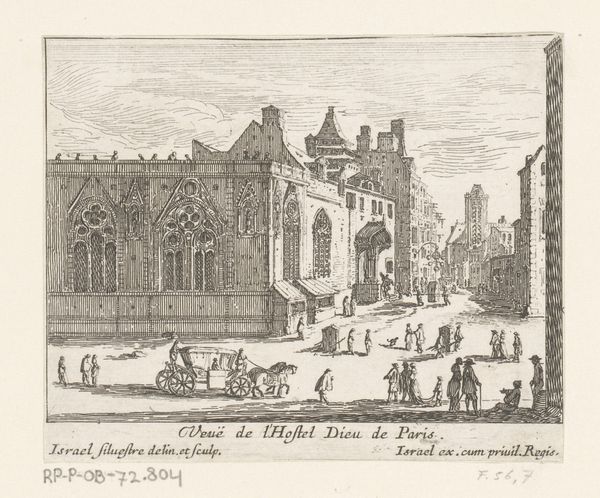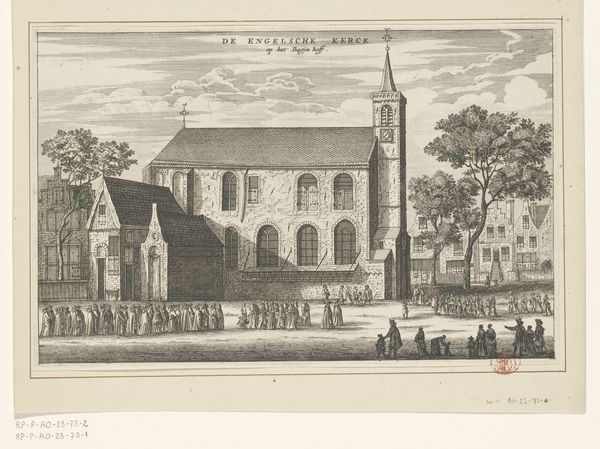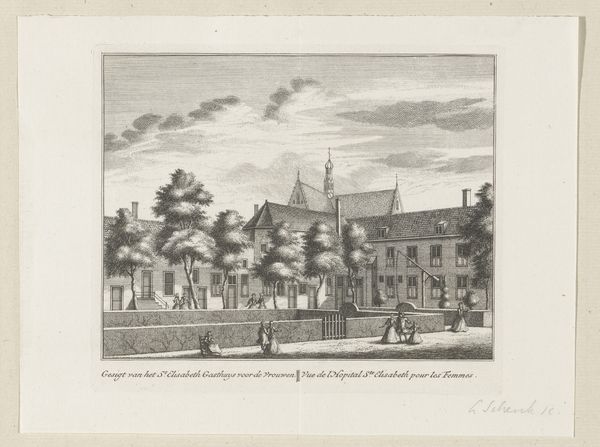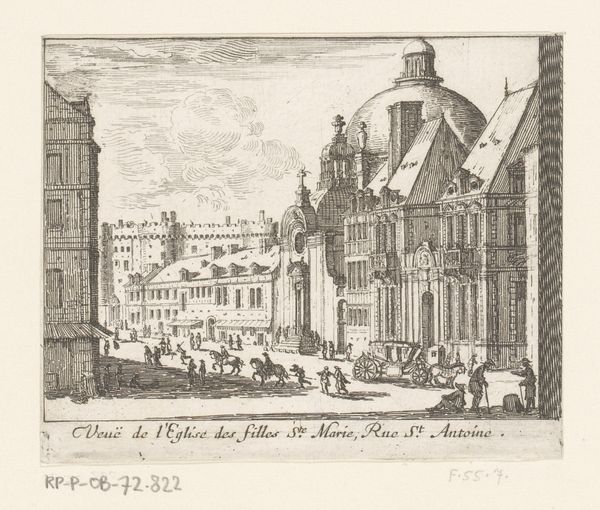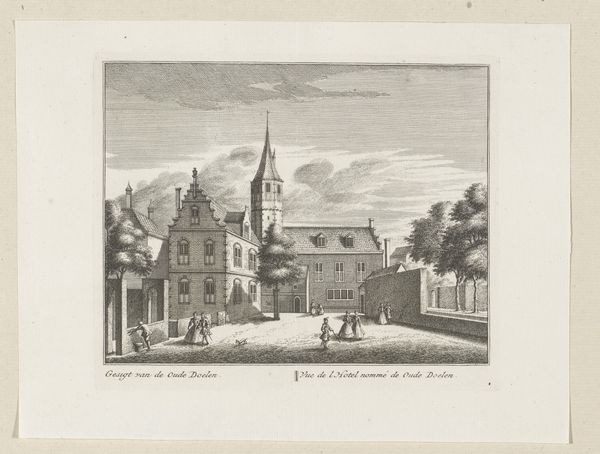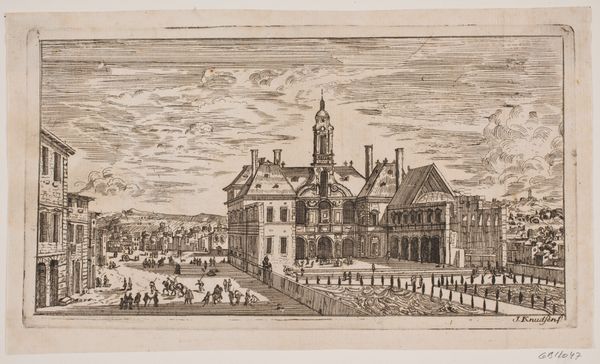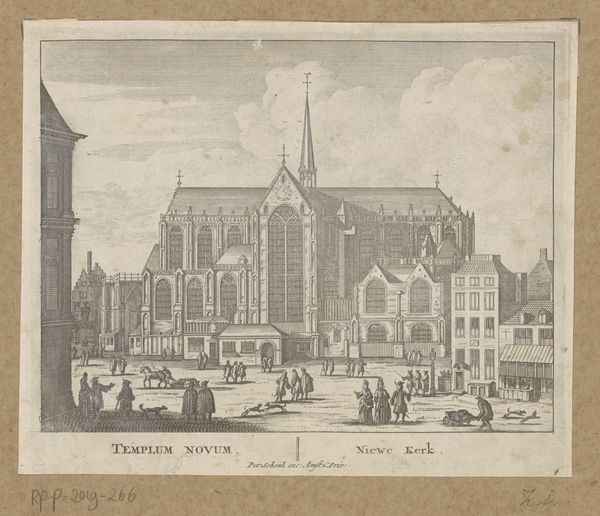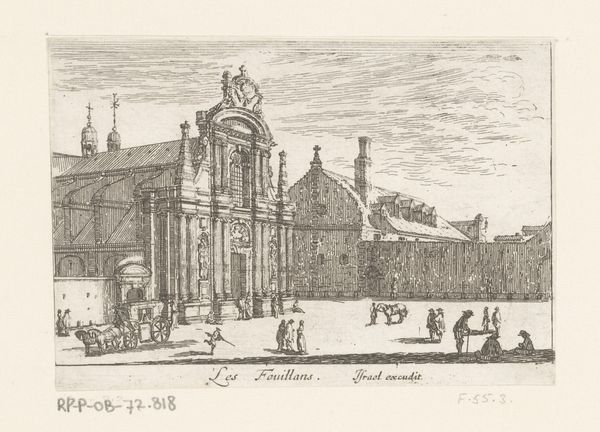
print, etching, architecture
#
baroque
# print
#
etching
#
etching
#
cityscape
#
architecture
Dimensions: height 76 mm, width 113 mm
Copyright: Rijks Museum: Open Domain
Curator: Welcome. Today we're looking at Israel Silvestre’s "Gezicht op de kerk van Saint-Sulpice," or "View of the Church of Saint-Sulpice", an etching dating from somewhere between 1631 and 1661. Editor: The texture of this etching, it has a very delicate, almost lace-like quality. I notice the careful details; the shading on the figures in the square really makes you see the variety of clothing styles, it almost captures the material itself, not just the representation. Curator: Silvestre was master of topography, capturing these urban views as almost social documents. Prints such as these circulated widely, shaping perceptions of Parisian life and architecture across Europe. The Saint-Sulpice depicted here stands not just as a religious building, but also as a civic symbol within a rapidly changing city. Editor: Absolutely. And you can see that material culture in how the labor is represented too. Etchings like this required skilled craftsmanship, and it speaks to a culture that valued fine detail and the ability to reproduce images for a wider audience. It's also worth noting how printmaking allowed for the mass consumption of art and ideas. How many impressions were produced? It tells you so much about social reach of Silvestre. Curator: The accessibility is key. While commissioned by elites, these images shaped public consciousness. Notice how the church grounds aren’t just empty space. They are filled with different social classes going about their lives. The architecture serves almost as a backdrop to everyday interaction and urbanity. How these images ended up on the walls of burghers would say a lot about it’s appeal. Editor: I agree. The composition guides our eye towards understanding these social relations, capturing the burgeoning capitalism in the 17th century, almost unknowingly! And the etcher is present; he put so much labour in that plate, to then be circulated through various merchantile means! Fascinating indeed. Curator: I find the political implication truly resonant when looking back at its socio-historical placement, allowing us glimpses into 17th-century Paris. Editor: And the etcher too! This view encourages us to examine not just the grandeur of the architecture but its position in a chain of socio-economical elements.
Comments
No comments
Be the first to comment and join the conversation on the ultimate creative platform.
